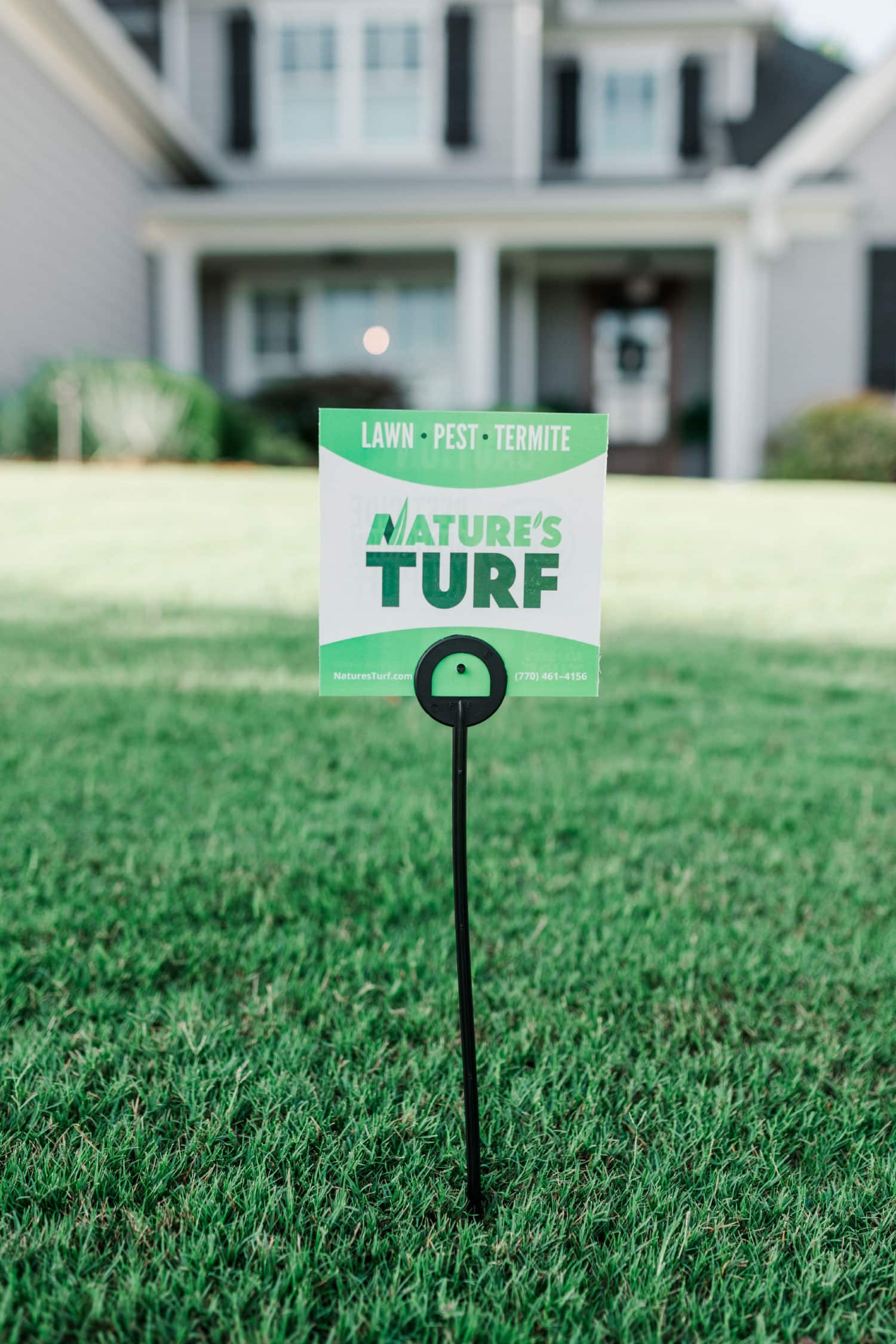Beyond employing exceptional technicians, being strategic in our planning to help you acquire a healthy and beautiful lawn, and providing quality product choices, Nature’s Turf also has a committed staff of support team members and specialists ready to address your concerns and answer your questions. Each yard is different, and we see all sorts of interesting challenges stemming from unique growing conditions. As seasons change, there are a few complications we see more than others. The long, hot days of summer create stress for our lawns, and often the stress can be reduced with better watering. Let’s discuss how to identify areas in your lawn that could be watered better.
How to Know If Your Grass Is Dry
Plants can tell us lots of things without saying a word, but this can be scary. Why does my grass look bad? We occasionally get frantic and frustrated calls because we were recently to a customer’s property, and they’re experiencing decline. The products we select and our application timing are strategic. Rest assured, we are abundantly cautious. The most likely cause is environmental.
During the summer, excessive heat, long days, and drought will result in wilt without supplemental irrigation. Most of us have experienced wilt in flowers or potted plants. Those same symptoms happen in turf. Drooping, shriveling, and chlorosis (yellowing) are conflating to cause that appearance of decline.
The solution may seem obvious: increase water. Done strategically, you can help the injured turf recover and grow even better with time, care, and feeding!
What If My Whole Lawn Is Dry?
Having a completely dry lawn is common for homes where lots are totally cleared in the building process. Long, hot days are accentuated by full exposure. While our bermuda and zoysia lawns thrive in direct sunlight, evaporation and transpiration, often combined as evapotranspiration, rates are extremely high during the summer months. Prolonged dry periods will deplete the water in the soil, causing widespread wilt.
The most common recommendation for watering warm-season turfs is generally an inch of water per week from either irrigation or rainfall, spread across two or three days that don’t touch one another. This is generally sufficient, but extreme conditions may require more water to avoid and recover from stress. In situations where your entire lawn is dry, raising the amount of time each watering station runs should solve your problems.
What If Only Part of My Lawn Is Dry?
Environmental factors can change drastically from one part of a lawn to another. It’s important to take these factors into account when assessing the cause of stresses in your landscape.
Here are a few common partial-dry-lawn scenarios:
- Part of the yard experiences long, hot sunlight while another part doesn’t. The areas with the most light and heat will likely experience drought stress first. If the shaded portion of your lawn is a different species of turf, this difference may be magnified.
- Most of the yard is green, but the turf under a big tree is off-colored. Trees are exceptional competitors for water. Even though they typically have big, deep root systems, much of the root mass they use to harvest water and nutrients are shallow. The discoloration under a tree could also be related to the shade they create.
- There are funny-shaped dry spots in the middle of an otherwise green lawn. Those dry spots may be caused by irrigation heads that aren’t functioning properly or aren’t spaced appropriately. This results in irrigation patterns that aren’t uniform. Areas with sufficient water will be fine, but areas receiving less water will express stress.
- Lines or patterns become visible during dry spells. These are often trenches from irrigation systems, drainage pipes, field lines for septic systems, or any other buried piping. The amount of compaction in those areas is generally different from the surrounding, undisturbed soil. This changes how efficiently turf can retrieve water and nutrients from the profile, and is often a good early indicator for drought stress.
Here are some suggestions for solutions to these partial-dry-lawn challenges:
The solution for dealing with dry spots in only parts of your yard is similar to that of full-yard wilt concerns, with the goal of adding more water to only the places that need it. Most irrigation systems are split into zones since water pressure is only high enough to run a few heads at a time. Increase the run time in zones exhibiting drought stress to deliver additional water to these areas without risking the negative effects of excessive water in areas it’s not needed.
When the cause is damaged equipment or improper spacing, run your system and observe its performance to identify which heads and zones are running inefficiently. Repair the damaged equipment or add rectifying spacing to restore uniformity and hopefully make your lawn’s color more even again.
Call the Experts to Help You Achieve Your Best Lawn
At Nature’s Turf, we understand that all lawns are exposed to environmental stresses and innumerable variables. Our goal is to grow healthy, resilient turfgrasses while providing support for our clients. When environmental woes give you pause, we’re always happy to help investigate and strategize solutions. We have a staff of service professionals and specialists ready to answer any question you may have. Our goal is to help you grow the grass you’ve always wanted. Got questions or concerns? Give us a call at 770-461-4156, or send us an email to info@naturesturf.com.








